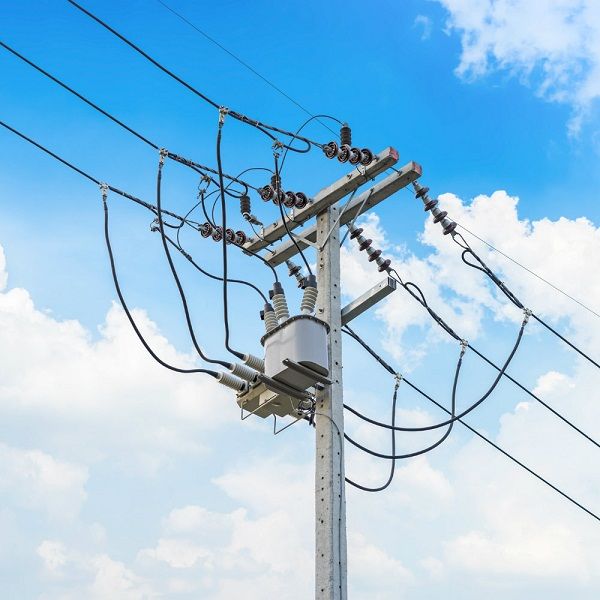While the Central Bank of Nigeria (CBN) intervention continues to be an important sector catalyst, especially to GenCos and DisCos,
Stakeholders in the Nigerian Electricity Supply Industry (NESI) are worried that seven years after the power sector was handed over to the private investors, the industry still relies heavily on Central Bank of Nigeria (CBN) interventions for continued survival.
These are some concerns recently expressed by various commentators in the sector who insisted that the sector would have collapsed without loans and interventions from the apex bank, noting that it was high time for the sector to stand on its own.
Recall that the CBN had launched the Power and Aviation Intervention Fund (PAIF), hovering at about N300 billion, Nigerian Electricity Market Stabilisation Facility (NEMSF) put at about N213 billion, N140 billion Solar Connection Intervention Facility, over N600 billion tariff shortfall interventions as well as a recent N120 billion interventions designed for mass metering among others.
The Federal Government had similarly released N600 billion for the power sector to bridge the shortfall in the payment of monthly invoices by key stakeholders in the sector with another N701 billion CBN facility deployed in March 2017 as a Power Assurance Guarantee.
Earlier this year, the Central Bank of Nigeria said it had disbursed over N1.3 trillion to support the power supply to Nigerians in the last five years. CBN Governor, Godwin Emefiele, while speaking at a news conference following a meeting of the Bankers Committee in Abuja said “What we are trying to say here is that the CBN has always been there to support the power sector. As you all know, we have disbursed over N1.3 trillion in the last five years to support through the Generators or Discos or to acquire equipment or buy meters or to improve what is being paid to electricity generating companies so that they can continue to pay for their gas and then the system can continue to operate.’’
An energy expert, Prof. Wunmi Iledare had earlier noted that interventions by the CBN as a repayable loan were understandable, but added that the current structure of the electricity market in the country could mar the interventions.
Economic analyst, Stephen Kanabe had similarly told reporters that the intervention by the apex bank in the distribution segment of the nation’s power sector, especially metering would contribute significantly, reducing the lingering challenges of poor infrastructure and arbitrary billing of end-users.
Associate Director, Energy, Utilities and Resources at Pricewaterhouse Coopers, Habeeb Jaiyeola, has repeatedly insisted that providing financial support to industries, especially the power sector remained a welcome development. Although he noted the need to ensure that the facilities are duly paid back, he said the government’s continued support to the power sector will have an overall impact on the sector to facilitate the required progress, adding that the federal government also has equity ownership in the DisCos.
He urged the authorities to clearly outline and monitor the interventions to ensure it achieved projected objectives, adding that the National Mass Metering Programme for instance may need to be checked against some of its set objectives in terms of coverage, availability, and completion time.
“An assessment of the impact of intervention funding in the power sector also needs to be looked into. While government intervention continues to be an important sector catalyst, monitoring impact will ensure government scarce resources are appropriately channelled for the benefit of Nigerians,” he said.
According to him, infrastructure funds are used the world over for the development of critical infrastructure which guarantees constant returns on investment for investors, adding that a critical element of the success of these funds is adequate planning and strategic contracting.
“The world over, Government interventions are used to catalyse economic development. In many cases, government interventions are quite critical in controlling the cost of borrowing in developing sectors. The CBN intervention remains a positive tool for the development of the domestic gas sector. However, the payback has to be enforced to ensure the fund remains available for further critical interventions,” Jaiyeola said.
He stated that to achieve sustainable growth, interventions alone cannot be the solution, adding that an appropriate pricing system needs to be instituted to enable the forces of demand and supply to determine the price and enable adequate returns on investment.
Aiming at addressing the growing liquidity challenges in the sector, the CBN while disbursing the Nigerian Electricity Market Stabilisation Facility (NEMSF), had noted that there was a need to support the power sector in order to solve the electricity supply challenges of the country, adding that specific reports from generating companies revealed that there was the execution of capacity recovery programmes in three hydropower stations including intake underwater repair project, an overhaul of unit 4 and compliant metering and supplementary protection at Shiroro Dam; overhaul of 2G6 at Jebba Hydro and rehabilitation of three units at Kainji Dam under permitted utilisations of the facility.
CBN had equally noted that a total of 300MW capacity increase was reported as a result of fund utilisation towards rehabilitation of both plants, adding that others were rehabilitation of seven gas turbines at three major thermal Power Plants namely Geregu, Transcorp Ughelli, and Ibom Power Plants.
CBN had said the intervention had enabled the Electricity Distribution Companies (DISCOs) to provide bank guarantees to the Nigerian Electricity Bulk Trader (NEBT); purchase over 171,071 units of meters comprising both maximum demand and single phase meters; rehabilitate over 332kms of 11KV lines and 130km of 0.45KV lines; 70,310 No 500 KVA transformers procurement; and construction of 34 new distribution substations and acquisition of one mobile injection substation under confirmed permitted utilisation by the initiative.
On the PAIF, the objectives included fast-tracking the development of electric power projects, especially in the identified industrial clusters in the country; fast-tracking the development of the aviation sector of the Nigerian economy by improving the terms of credit to airlines; serving as a credit enhancement instrument to improve the financial position of the Deposit Money Banks (DMBs); improve power supply, generate employment, and enhance the living standard of the citizens through consistent power supply as well as providing leverage for additional private sector investments in the power and aviation sectors.
Former Chairman of NERC, Sam Amadi had noted that the CBN intervention remained special funding to deal with liquidity crisis and legacy debt in the sector, adding that it would be repaid but through a convenient process that would not adversely affect the sector’s investment plans.
“The gains of the fund are two-fold: whether CBN is getting repayment as and when due, I think through the escrow the CBN can guarantee itself repayment. But the bigger issue is whether the fund has improved the operations of the discos,” he queried rather rhetorically.
Source: independent










